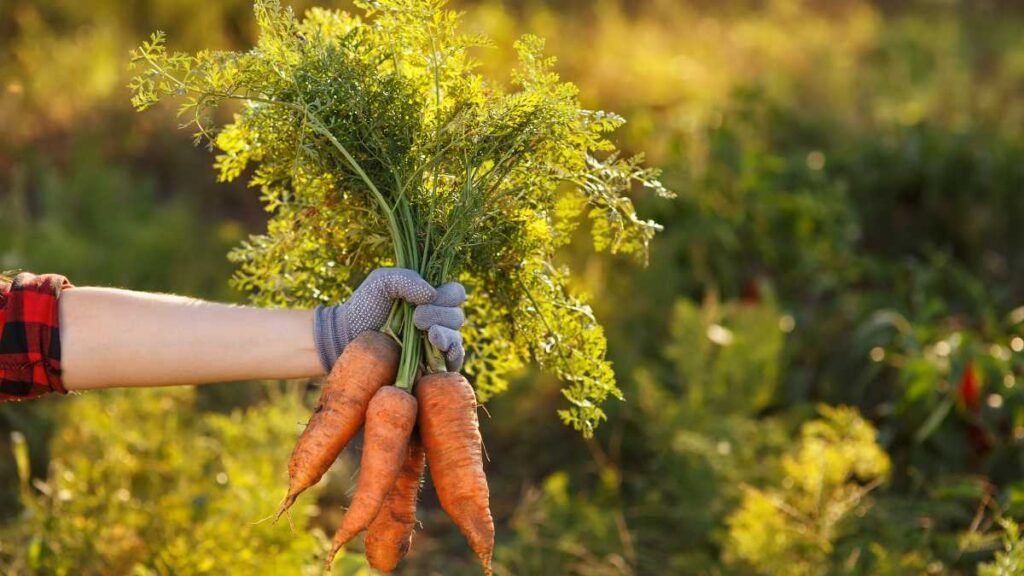Introduction:
Hey there, green thumbs and future farmers! Are you ready to turn your schoolyard into a verdant paradise of deliciousness? If so, you’re in the right place. Today we’re diving into the 10 best crops for school and youth gardens. These plants are not only easy to grow, but they’re also engaging for young minds and taste buds. So roll up your sleeves, grab your trowels, and let’s dig in!
Radishes
First up on our list is the rad-ish radish. Why are they rad? Well, they’re easy to grow, fast to mature, and come in a variety of colors, shapes, and sizes. Kids will love watching their radish seeds sprout within just a few days, and they’ll be ready to harvest in as little as 3-4 weeks. Plus, radishes have a little spicy kick that can be a fun taste-test experience for young palates. They’re also a fantastic way to teach kids about root vegetables and the importance of healthy soil.

Sunflowers
Nothing says “hello sunshine” quite like a sunflower. These towering beauties can grow up to 12 feet tall, providing the perfect opportunity for kids to measure their growth and learn about how plants respond to sunlight (hello, phototropism!). Sunflowers are also super low-maintenance, making them a great choice for novice gardeners. Bonus: once the flowers have matured, students can harvest and roast the seeds for a tasty, protein-packed snack.

Cherry Tomatoes
We’ve never met a kid who doesn’t love popping a sweet, juicy cherry tomato straight into their mouth. These little red gems are perfect for school gardens, as they’re easy to grow, produce bountiful yields, and can be incorporated into countless recipes. Plus, students will learn about pollination, as bees and other friendly insects are drawn to the blossoms. Just beware: you might find yourself with a sudden influx of pint-sized tomato thieves!

Lettuce
Lettuce is an excellent choice for a school garden, as it’s simple to grow and comes in a variety of colors and textures. This leafy green is also a fast grower, with some varieties ready to harvest in just a few weeks. Kids will love watching their lettuce beds transform into a beautiful patchwork quilt of green, red, and purple hues. Plus, lettuce is a prime candidate for introducing students to the concept of “cut-and-come-again” harvesting – which means they can enjoy multiple harvests from a single planting.

Peas
Give peas a chance! Not only are these legumes rich in nutrients and a favorite snack for many kids, but they’re also super easy to grow. Peas are a fantastic way to teach children about plant life cycles, as they can watch the vines grow, flowers bloom, and pods develop. Plus, peas are natural nitrogen fixers, which means they’ll help improve soil fertility for future crops.

Potatoes
Potatoes are a fun and versatile crop for school gardens. While they might not be the fastest-growing plant, they more than make up for it with their mysterious underground growth habits. Kids will love digging for potato treasure at harvest time, and they’ll be amazed by the variety of colors and shapes available. Not to mention, potatoes provide a great opportunity to talk about the history of agriculture, global food staples, and the importance of crop rotation.

Carrots
What’s up, doc? Carrots are a classic school garden favorite for several reasons. They’re easy to grow, come in a range of colors (orange, purple, yellow, and even white), and are a tasty treat that most kids enjoy. Students will love monitoring the growth of their carrot tops, but the real excitement comes at harvest time when they pull up these hidden treasures from the soil. Carrots also offer a chance to discuss the nutritional benefits of beta-carotene and the importance of eating a rainbow of fruits and vegetables.

Pumpkins
Pumpkins aren’t just for Halloween! These magnificent gourds are perfect for school gardens, as they provide a fascinating look at plant growth and development. From the initial vine sprouting to the swelling of the pumpkin itself, students will be captivated by the entire process. Plus, pumpkins are an excellent way to teach about the value of composting, as they love nutrient-rich soil. And when it’s time to harvest, kids can get creative with carving or turn their pumpkins into pies, soups, and other tasty treats.

Strawberries
Sweet, juicy strawberries are a hit with children and adults alike, making them a perfect addition to any school garden. These low-maintenance, perennial plants produce an abundance of fruit that students can enjoy all season long. As an added bonus, strawberries offer a hands-on opportunity to learn about runners, pollination, and the role of birds and other animals in seed dispersal. Plus, who can resist a sun-warmed strawberry plucked straight from the garden?

Beans
Last but certainly not least, beans are a fantastic crop for school gardens. These versatile legumes come in many different shapes, sizes, and colors, giving students plenty of variety to choose from. Beans are easy to grow and can be trained to climb up trellises or other supports, making them an ideal candidate for vertical gardening. Like peas, beans also help fix nitrogen in the soil, promoting healthier plants and increasing garden productivity. And when it comes to harvest time, there’s something undeniably satisfying about snapping fresh beans straight from the vine.

Conclusion:
There you have it – our top 10 crops for school gardens! These easy-to-grow, engaging plants are perfect for sparking young minds’ curiosity and fostering a love of gardening, nature, and healthy eating. So, what are you waiting for? Grab your tools, gather your students, and get ready to sow the seeds of knowledge and deliciousness. And remember: the best gardens are the ones that grow not just plants, but young minds as well. Happy gardening!





